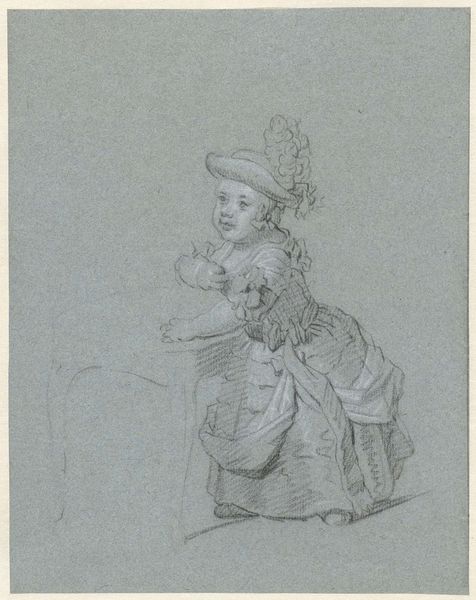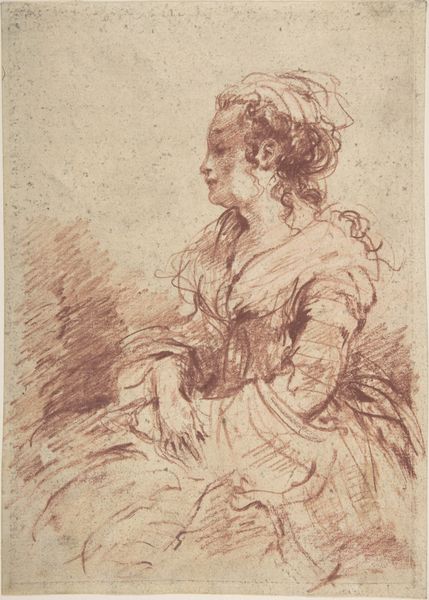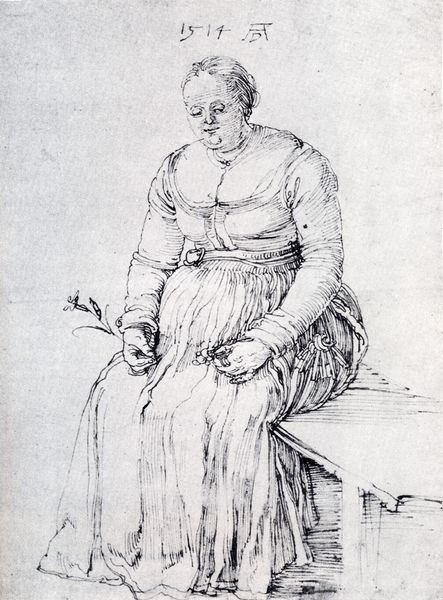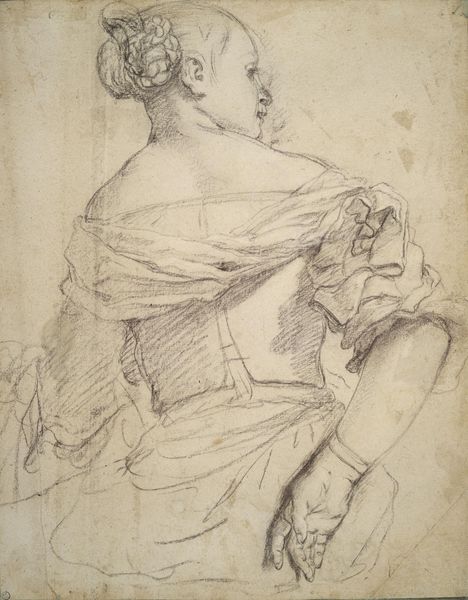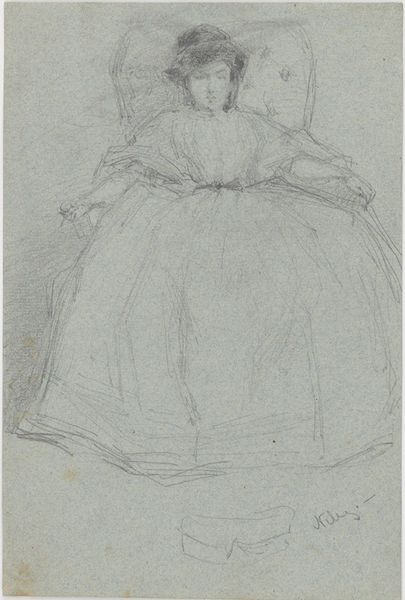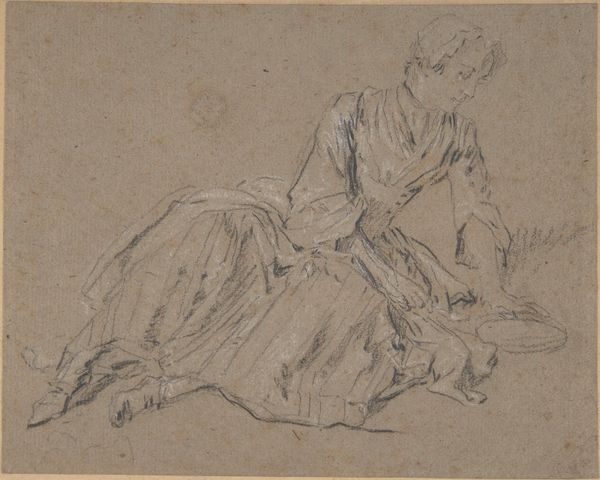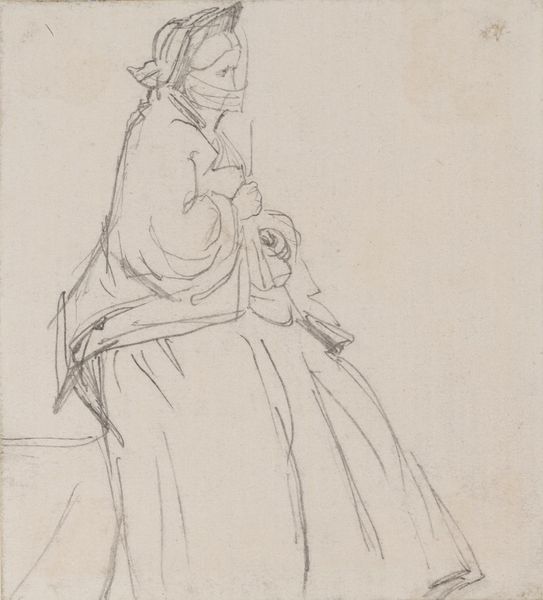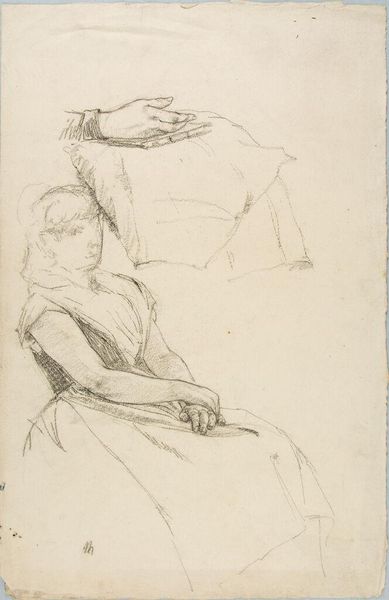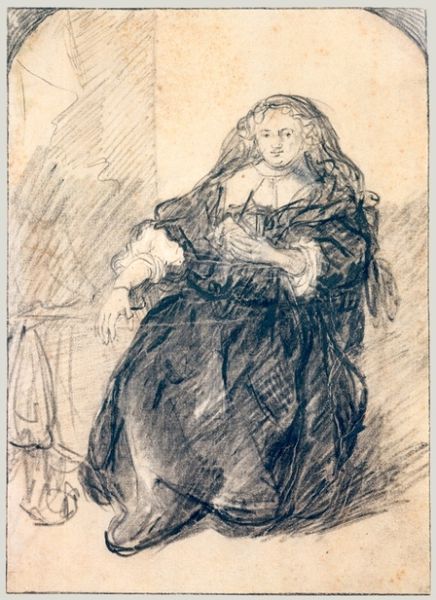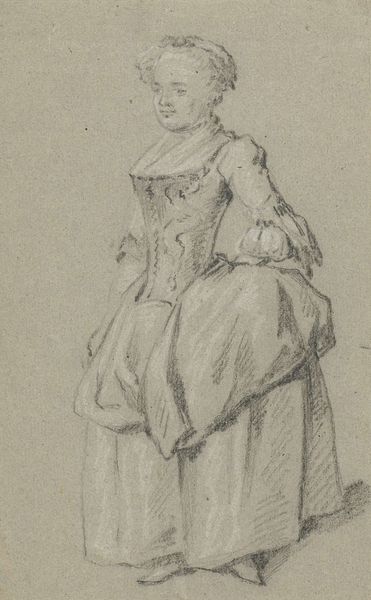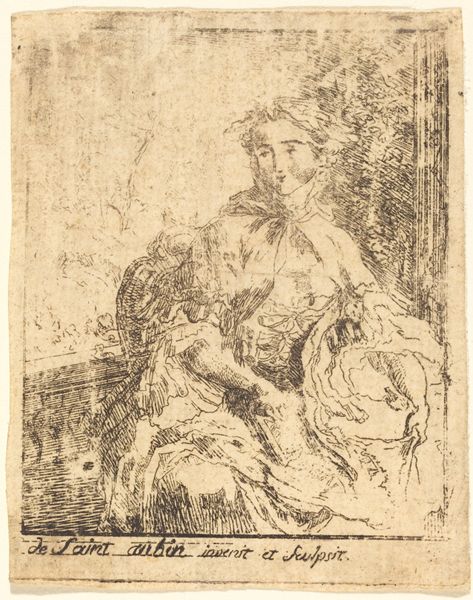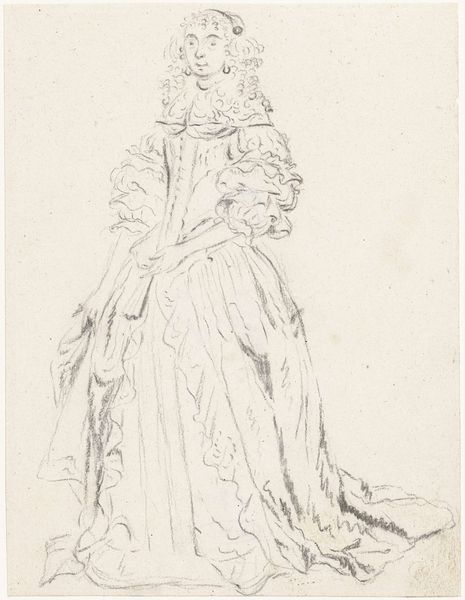
Study sheet with Mary and Child 1525
0:00
0:00
albrechtdurer
Städelsches Kunstinstitut und Städtische Galerie (Städel), Frankfurt am Main, Germany
drawing, pencil
#
portrait
#
drawing
#
pencil sketch
#
figuration
#
child
#
pencil
#
italian-renaissance
#
sitting
Copyright: Public domain
Editor: This is a pencil drawing called "Study sheet with Mary and Child," created around 1525 by Albrecht Durer. The composition has such flowing lines. What immediately strikes me is the interesting arrangement of the figures and the heavy drapery—how do you interpret this work from a formal perspective? Curator: Indeed, the dynamism is captivating. The linear quality is paramount. Notice how Dürer utilizes hatching and cross-hatching, particularly in the rendering of the Virgin's voluminous garments, to create areas of deep shadow and to suggest three-dimensionality on a flat plane. Do you observe how the artist manipulates line weight to create depth and spatial recession? Editor: Yes, the darker lines definitely bring forward the primary figure. I also see a secondary, fainter figure in the bottom right corner. Curator: Precisely. This use of line also directs the viewer's eye throughout the composition. Consider how the delicate, almost ethereal lines that define the Christ Child contrast with the denser lines around the Virgin’s head and torso. How does this contrast influence your reading of the piece? Editor: I suppose the focus on the Virgin, compared to the soft rendering of Jesus, directs attention towards her as the central figure. What’s also fascinating is how he suggests texture and form almost exclusively through line. Curator: Exactly! Dürer’s technical virtuosity lies in his capacity to construct form and imbue it with life through a sophisticated vocabulary of marks and strokes. I find his engagement with linear structure here far more impactful than if he relied upon color to express dimension. Editor: I agree. I'm walking away with a greater appreciation for how an artist can exploit the structural qualities of drawing to guide the viewer’s experience and direct their focus, even in a preliminary sketch. Curator: And I'm reminded of the power of focusing on pure form to unlock meaning in artwork; often we look for secondary stories or symbolisms.
Comments
No comments
Be the first to comment and join the conversation on the ultimate creative platform.
